Description
Elegant Form and Tropical Texture
Cycas Revoluta is a very popular houseplant for all those who are only beginning their journey to keep plants at home. The plant has feathery foliage, which makes it an exciting addition to the space. King Sago Palm does have the name palm in it, but it is not really a palm tree and is known as a cycad. This plant is known for producing nuts, but you won’t find any fruits or flowers. These plants are very commonly found in Southern China and the warmer areas of Japan.
You can still grow the plant if you live in a cooler climate, but you will have to grow it indoors. The feathery foliage of the plant grows in a ring which makes it very mesmerizing. Use this guide to grow the plant to its full potential.
Caring for your Sago Palm
With the right care, any plant will flourish, and this Cycad requires a bright and warmer environment and likes humidity usually found in warmer climates. Let’s take a deeper look at all the care requirements, so your plant grows well.
Light
This plant enjoys bright and indirect light. It would be best if you did not keep them directly under sunlight as that will be too harsh for them. If the plant receives direct sunlight, it is likely to burn its foliage.
However, when you keep the plant indoors, it is best to find a space near a south-facing window to get maximum indirect sunlight. If you do not have enough sunlight inside your home, you can keep it outdoors under some shade, which would work fine.
Soil
The Sago Palm can do well with many different types of soil. All you need to do is ensure that the soil of your choice has good drainage. The ideal soil for King Sago Palm is sandy as it is slightly acidic and still has a higher organic matter content.
Water
The trunk and leaves of the plant are fleshy and store water. Therefore, you don’t have to water it frequently, and it can easily thrive in drought conditions. But for optimal growth, you need to ensure that there is moderate moisture. However, the soil should never be soggy, or that could cause significant damage to the plant.
You can reduce the frequency of watering the plant during the winter as the plant is not actively growing then.
Fertilizer
During the growth season, it is a good idea to fertilize on a monthly basis. You can use a liquid fertilizer or a slow-release fertilizer so that you can get good growth during the season. If you have planted the Sago palm in clay, then you can reduce the amount of fertilizer by half.
Common Issues
As a houseplant owner, you need to know all the problems that may emerge if you don’t take good care of the plant.
Pests
Sago Palms are not very susceptible to pests, but there are some pests that can pose some problems. For instance, you must look out for Spider Mites and Scale. These pests can cause your plant to lose its color and cause other significant damage.
If you want to get rid of these plants, you can use insecticidal soap and clean off all the pests and try to give them plenty of airflow.
Disease
It may be easy to maintain this plant, but you need to prevent any diseases from damaging them. Some of the diseases include:
Black Spots
Black spots are visible if your plant has gone through an insect strike. These spots look like dirt but are sooty mold. You can wash off the leaves to get rid of these spots.
Wilting Leaves
The leaves of King Sago Palm wilt when it suffers from a fungal infection. That can be caused by water logging or if your soil is not well draining.
Pruning
You can prune your King Sago Palm if the leaves have gone brown. If the leaves are yellow, you can leave them as is. These plants can restore back to health. To remove the fronts, you can cut them close to the trunk and use sterilized shears.
Propagation
To propagate the plant, you can use its seeds and the division of the plant. While seeds will take longer, the division method is a lot simpler when it comes to propagation. You must transplant the pups at the right time, which can be late into fall or early spring.
Potting/Repotting
These plants do not have fast growth, and that means that you will not have to repot them many times. It may need repotting once in three years, and so on. You can repot it during springtime and get fresh soil for the repotting.

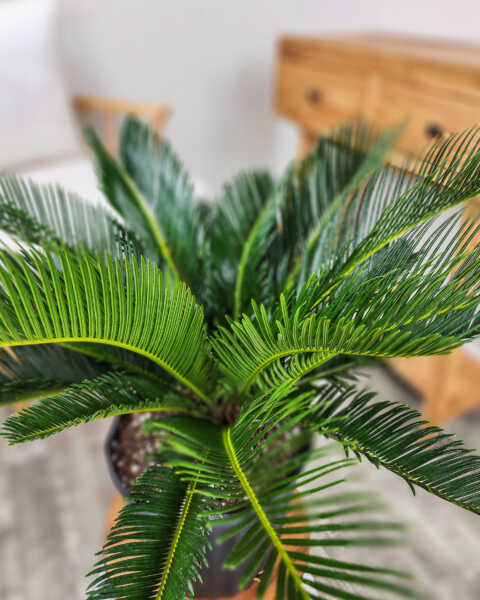

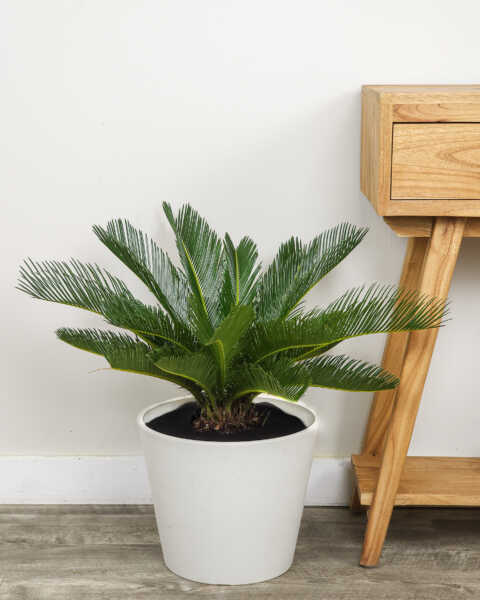
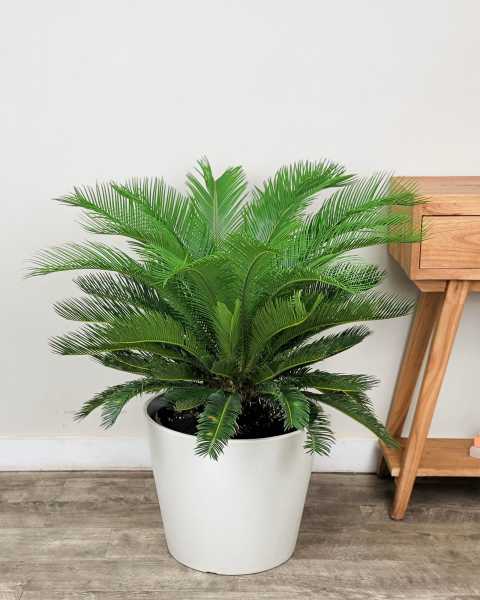
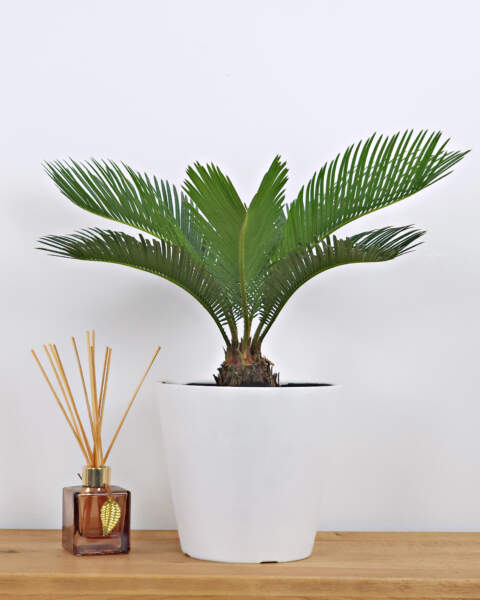











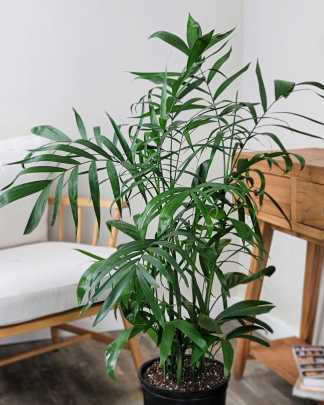

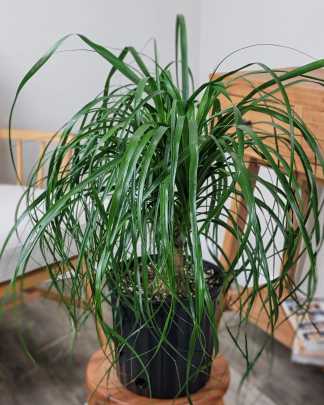
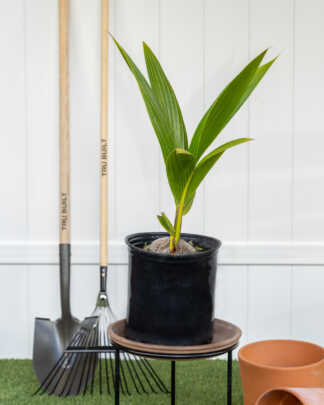
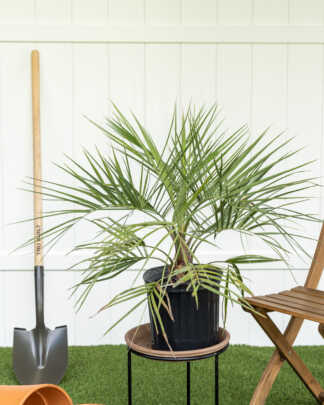







Edwin Gonzalez (verified owner) –
Juanita Serna (verified owner) –
Duane Lenz (verified owner) –
plant looks good and healthy.
Brayden (verified owner) –
My Mom loved her palm! Came wrapped securely and in great shape. Shipping was quick and easy. Highly recommend!
Paul Duguay (verified owner) –
Absolutely beautiful stunning couldn’t ask for me
Laura L. (verified owner) –
So funny, but when I first unwrapped this plant, for a second I thought I was sent an artificial plant! It arrived in great condition – I love it! Thanks so much!
Jeff (verified owner) –
A beautiful plant arrived packed so well and ready to fine a forever HOME….THANK YOU 😉
Suzanne B. (verified owner) –
Perfect!
Alice C. (verified owner) –
This thing is an adorable little alien.
Sharon (verified owner) –
Fantastically healthy and gorgeous.
Daryl (verified owner) –
Arrived beautifully wrapped and protected. Healthy plant.
wendy (verified owner) –
This place is amazing you can Tell they really care about plants I stopped ordering plans online due to the quality I was getting decided to try this based on the reviews and I’m not disappointed thank you so much plantvine team
Andrzej Puchalski (verified owner) –
Very expensive, in home depot half price and bigger plant .
Benay S (verified owner) –
The palms were fantastic in quality. I was very impressed!! I was glad to see a picture of them even before I got them. I would buy again and recommend this company to anyone. Thank you so much for your service.
RICH W. (verified owner) –
Great looking, shipped well. Following instructions
Elizabeth Toepfer (verified owner) –
arrived in beautiful shape and thank you…great palm
Michael T. (verified owner) –
Palm tree arrived intact and is a gorgeous addition to my house!!
Kelanda (verified owner) –
Plants were much, much smaller then the expected
Anonymous (verified owner) –
looks great!
Ester Mickens (verified owner) –
I love it. It’s beautiful! Ordered another plant but a different one this time.
Linda Johnson (verified owner) –
The plants arrived looking like they hadn’t even went threw a shipping process. They looked like I went to a nursery and picked the very best plants out. Super happy with the quality of plants I received. Thank u so much!
Jeremy G. (verified owner) –
I ordered an Extra Large Cycas Revoluta aka Sago Palm from PlantVine which arrived two days ago. I am thoroughly impressed by both the quality of the plant and the care they took to ship it. The plant was both wrapped and had bamboo sticks to keep the plant in place on the box. When the box was opened the plant was very healthy, full and not a branch out of place.
My Sago Palm is definitely sizeable, 27″ tall and 33″ wide. Exposed trunk is 7″ wide and high. Very healthy. Perfect shape. I can hardly wait to transplant into the ground in a week as instructed.
I would definitely buy from PlantVine again and would highly recommend them for their care in packing, shipping and choice of beautiful plants.